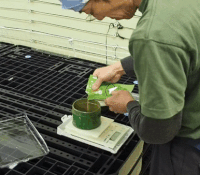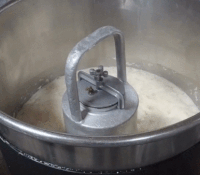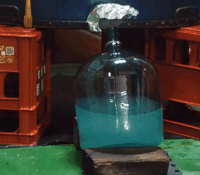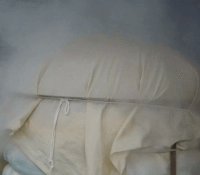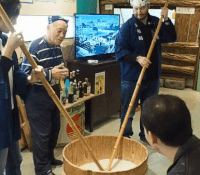Production Lexicon
| Table of contents |
|---|
Aminosando:
• A numerical value that indicates the amount of amino acids present in a Sake.
Arabashiri:
• The first of three batches during the fune pressing style. This batch is the free flowing Sake that runs off before any pressure has been applied to the cotton bags filled with moromi.
Aspergillus Oryzae:
• Scientific name of the kōji mold.
Binzume:
• The bottling of Sake.
Binzume-yōsui:
• Water used for bottling. It's divided into water for cleaning bottles, diluting Sake and cleaning equipment.
Bodaimoto:
• Starter mash technique that got inventend in the Bodaisan Shōryakuji during Muromachi period. 10% of the rice to be used is steamed and buried in the remaining 90% of raw, unsteamed rice before water is added.
Chōgō:
• Blending. The aroma and flavour of Sake can vary from tank to tank during storage. Therefore, the tōji blends the Sake to create the desired characteristics and quality.
Dakidaru:
• A sealed bucket that holds water of varying degrees for temperature adjustments of the starter mash (shubo/moto).
Dekōji:
• Literally "sending out kōji". Final step of the kōji making process.The finished batch is cooled in the cold air outside the kōji room, thereby stopping the growth of the kōji mold.
Doburoku:
• Unfiltered sake variety.
Fukuro-tsuri:
• The smoothest way of pressing Sake also known as shizuku-shibori (drip pressing). Cotton bags filled with moromi are suspended while each drop of Sake is collected in a 18l bottle called tobin.
Fune:
• A traditional way of pressing by applying pressure to long bags full of moromi stacked inside a wooden vat called fune that has the shape similar to a boat (fune).
Genmai:
• Brown unpolished rice.
Gineboshi:
• Rice variety developed in Aomori.
Ginjōshu:
• Nihonshu polished under 60%.
Gishiwajinden:
• One chapter dedicated to Japan in a Chinese geography/ history book and first written record of drinking sake in Japan (around 300AD).
Gohyakumangoku:
• Rice variety from Nigiita, translates to “5 million koku”.
Goshu-no-nikki:
• First technical book about sake production, was completed during the Muromachi Period.
Haenuki:
• Rice variety widely grown in Yamagata as table rice.
Hakumai:
• White rice.
Hanafabuki:
• Rice variety developed in Aomori.
Hanaomoi:
• Rice variety developed in Aomori.
Hanasayaka:
• Rice variety developed in Aomori.
Hatsu zoe:
• First day of the “three step brewing” (sandan shikomi) to build up the Moromi.
Hattan 35 Go:
• Sake rice variety.
Hattan Nishiki:
• Rice variety born in Hiroshima (cross between Hattan 35 Go and Akitsuho).
Honjōzōshu:
• Sake made by using rice polished at 70% minimum, water, kōji and distilled alcohol.
Hi-ire:
• Pasteurisation.
Huang-jiu:
• “Yellow wine”, fermented, alcoholic, Chinese beverage.
Ichi-gō:
• 180ml bottle size.
Ikkiyu:
• “First class” ranking in the abandoned sake classification system (kyubetsu seido).
Ine:
• Rice plant.
Ippan-mai:
• “General rice” referring to eating/ table rice.
Isshō-bin:
• 1800ml bottle size.
Itto-bin:
• 18 litres bottle, sometimes used to let freshly pressed sake settle.
Japonica:
• One of the major domestic rice varieties in Asia.
Jiuqu:
• Dried starter culture used in production of baijiu - made from pulverized wheat grain or steamed rice.
Jōmai:
• Rice steaming process and steamed rice.
Jōsō:
• Pressing of the sake.
Jōzo arukōru:
• Brewers alcohol.
Jun:
• Pure.
Junmaishu:
• Sake made only from rice, kōji and water.
Kake-mai:
• Steamed white rice which is cooled down and then directly used for the Moromi.
Kame no O:
• Rice variety discovered in Yamagata.
Kan:
• Generic term for warmed sake.
Kan-zukuri, Nada no kan-zukuri:
• Cold-weather brewing, cold-weather brewing Nada style, perfected during the Edo period.
Kaori:
• Fragrant.
Kara-kuchi:
• Dry
Karai:
• Dry
Karami:
• Representative flavour describing dryness or spiciness.
Kasu:
• Lees remained after pressing moromi to clear saké .
Kasubuai:
• Percentage ratio of the sake kasu to the original volume of polished rice.
Kasujiru:
• Soup based on sake kasu.
Kirei:
• Clean, beautiful (sake with no off flavours, low level of acids and amino acids, smooth and balanced).
Kitanai:
• Dirty (off-flavours, off-odours, excessive level of acidity, opposite of kirei).
Kōji:
• Growing kōji-kin on rice (kome-kōji), barley, soy beans other grains.
Kōji-kin:
• Sake mould/ fungus (Aspergillus oryzae).
Kōji-mai:
• Rice made into kōji.
Kokon meibutsu gozen-gashi hidensho:
• Book of secrets mentioning a description of making amazake, Kyoto 1718.
Koku:
• Originally a measure of rice equal to 1000 masu (around 180kg).
Koshihikari, Hitomebore, Haenuki, Akitakomachi Fune:
• Eating rice strains more common for brewing in recent years (less expensive sake).
Koshiki:
• Traditionally a large wooden vat, which was used to steam the rice.
Koshu:
• Old sake (made during the preceding Brewing Year).
Kuchiatari:
• Taste and mouthfeel.
Kuchikmi:
• No Sake “mouth chewing sake” - using the amylase in saliva to break down sugar to starch.
Kurabito:
• Sake brewery worker.
Kuramoto:
• Sake brewery owner.
Kyūbetsu seido:
• Sake classification, existing from 1934 till 1989.
Kijōshu:
• Sake that is made by replacing half or part of the water used in brewing with Sake. It is ex-tremely sweet and full bodied.
Kōbo:
• Yeast.
Kōjikin or Kōjikabi:
• Bacteria/enzyme - Aspergillus Oryzae, a starch-dissolving mould. It converts the starch in the grain into sugar.
Kura:
• A Sake brewery
Moromi:
• Main mash, fermenting mixture of rice, kōji, yeast and water
Moto or Shubo:
• Yeast starter
Sandan-shikomi:
• Three stages process for slow fermentation
Shinpaku:
• White centre of grain after removing the exterior fats, protein and minerals.
Shubo:
• The yeast starter for a batch of Sake.
Tane-kiri:
• Second stage to produce Koji, spreading the spores.
Taru sake:
• Sake aged in a wooden barrel (taru), typycally a Japanese cedar.
To:
• Japanese measurement equal to 18 liters.
To-bin:
• 18 liters glass jar.
Toko:
• Large table used to produce Koji.
Tokkuri:
• A carafe used to warm and serve sake.
Tokubetsu:
• it means "special". It characterizes a special style of Junmai or Honjozo.
Toku-jo:
• The highest rice grade to make Sake in Japan.
Tokutei-meisho-shu:
• Premium Sake that use only rice, koji, water, yeast and high strength alcohol (optional) to make sake.
Toji:
• Brewer master.
Tome-zoe:
• The final addition of ingredients (koji rice, steamed rice and water) at day 4th of Sandan-Jikomi to make the Sake mash (Moromi).
Touka:
• Saccharification, the conversion of long molecules of sugar (starch) into small molecules (glucose).
Tsuki-haze:
• A style of koji rice with the mould growth in some spots of the rice grain.
Usu-nigori:
• A nigori style with small amount of solids (the remaining sake lees).
Uwanomi:
• Top spout of a holding tank.
Warimizu:
• Sake dilution with water.
Yabuta:
• Major brand of a filtration machine the looks like a big accordion.
Yamahai:
• One of the two Kimoto procedures of the fermentation starter. It does not have the labor intensive step of the rice mashing.
Yama-oroshi:
• The labor intensive step of mashing the rice during the fermentation starter (shubo/moto).
Yabuta-Shibori:
• Most common filtration method through an "accordion" like machine (Assakuki).
Zatsumi:
• Undesirable, unbalanced Sake taste.
